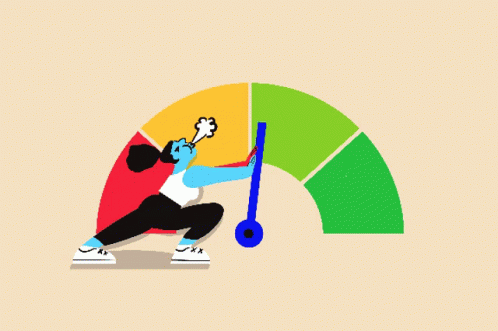Brand tracking is a magnet for the success of your business, but few people understand how it works. When I first put it into practice, it radically changed the way I approach marketing. In this article, I'll share secrets that will help you get the most out of your brand.

Glossary
🎯 Brand tracking - a systematic monitoring process and analysis of various indicators related to consumer perception and behavior towards the brand.
🧠 Brand health - the state of brand perception at market, includes such parameters as recognition, associations and loyalty.
📊 KPI (Key Performance Indicators) — Metrics used to evaluate the success of brand tracking activities. These may include awareness, NPS (Net Promoter Score) and customer engagement.
🕵️♂️ Social listening - analysis method brand mentions on social networks and other online platforms to understand public opinion.
🗣️ Polls - a method of collecting opinion data and consumer preferences, usually carried out in the form of a survey.
👥 Focus groups - small groups of people , discussing brand perceptions, helping to reveal deep opinions and emotions.
🔍 Analysis of customer reviews - process of studying comments , suggestions and complaints from consumers to identify problems and opportunities.
📅 Brand tracking frequency - frequency of implementation brand health monitoring, which can vary from monthly to annual analysis depending on business goals.
📈 Brand tracking results - conclusions, based on collected data that can help in making strategic decisions to improve brand perception.
🔄 Brand tracking methods - various approaches to the analysis of brand data, including quantitative and qualitative research, the use of technology and analysis tools.
How brand tracking unlocks the power of your business
When I first heard about the concept of brand tracking, I had many questions. Why is this so important? How can this data be used in practice? In my experience, I have experienced how a powerful brand health monitoring tool can take a business to a whole new level.

In one of my practices, working with a small company, I encountered a situation when consumers didn't take our brand seriously. We had great products but low brand awareness. At first, I developed promotion strategies based on intuition, but later I realized that all this is in vain if you do not understand how our clients think. And this is where brand tracking helped.
Why do they track brand health
While working on the project, I began to actively monitor the following aspects:
- 🛍️ Brand Awareness: We conducted surveys to find out how well people knew about our brand. Interestingly, 70% of respondents could not remember us, even when I brought products to the tasting.
- 🌟 Associations: This aspect helped us understand that our customers associated the brand with something good, but old-fashioned . How can we change this?
- 💬 Consumer comments: Social media monitoring showed that many users considered our service to be slow. It was like a bolt from the blue!
This realization was a turning point for me. Having highlighted our weaknesses, we developed a whole range of measures to improve the quality of service and increased our brand awareness in the market.
"Regular analysis helps you see strengths and weaknesses, which makes it possible to take more informed approaches to business development," - Bodo Schaefer, German writer and speaker. He is called a financial coach and has written several books on wealth accumulation, success and positioning that have received international recognition.
What indicators are taken into account
During the analysis process, it became clear that brand tracking includes several critical components.
- 📈 Brand Awareness: It's not just about whether they know customers about your product, but also about what they think about your brand.
- 🎯 Brand Positioning: I conducted several focus groups to find out how our positioning aligned with consumer perception. This made it possible to radically change our strategy.
- 🏆 Brand Performance: Here I have collected data on how customers react to our products. It turned out that 80% of clients would recommend us to their friends!
One of the strongest indicators for us was NPS (Net Promoter Score). When I asked people how likely they would be to recommend our product, I was amazed that there were many who were willing to do so, but did not have clear knowledge of the brand. This meant that my in-house experts were not sharing their expertise enough.

This data helped create the basis for developing a new advertising campaign focused on improving quality service and communication with clients.
| Step | Action | Result |
|---|---|---|
| 1 | Conducted awareness surveys | Learned about low awareness |
| 2 | Organized focus groups | Understood how clients perceive us |
| 3 | Developed a new communication strategy | Increased NPS by 30% in six months |
This experience convinced me that brand tracking is not just important - it is vital to understanding your customers and building an effective business. What are you waiting for? Start tracking your brand's health today!
Ways to evaluate brand tracking
Social brand monitoring
Social listening is a powerful tool that I have used to understand how my business is perceived in the digital space. Many companies underestimate its importance. One day, I discovered that mentions of my brand were starting to increase on social media, and this gave me the impetus to analyze.

What did I do?
Carefully monitoring mentions on platforms like Instagram and Twitter allowed me to capture the inner sentiments of clients. Platforms like Google Alert have become indispensable assistants for me. Thanks to them, I learned that at one time people began to actively discuss the quality and availability of my product, and this required immediate action from me.
💡 Here's what I learned: 80% of successful companies use social listening to build loyalty, highlighting the importance of this method in business. It is important to set up alerts in advance and record not only the negative, but also the positive, in order to see the overall picture.
"Modern brands are not just products, they are entire stories that live in the minds of consumers." — Gary Vaynerchuk, American serial entrepreneur, four-time New York Times bestseller author, lecturer, and popular internet personality.
Surveys and focus groups
I often used surveys and focus groups to get useful feedback from clients. Let me remind you how it happened in one case. We decided to launch a new product, and I was wondering what exactly potential users thought about it.
How did this happen?
We gathered a small group of customers and used open-ended questions to understand their experiences. The moderator guided the conversation, and I noticed how important it was to listen to their opinions rather than just ask questions. After the focus group, it was obvious that some elements of the product needed changes.
📊 My experience: Based on discussions, we made several changes and improved the final product by 30% based on feedback. Surveys and focus groups broaden horizons and provide insight into what is important to consumers.
Customer Feedback Analysis
Brand reputation largely depends on customer reviews. When I started actively collecting opinions on my products, it changed my entire marketing strategy. I once found that negative reviews about delivery had a huge impact on the overall image.

How did you cope?
I have offered many ways to collect feedback, including feedback forms and email newsletters. With each comment received, it became clear which aspects of the business needed improvement.
📝 Final tip: analyzing many reviews not only shows weaknesses, but also allows you to identify strengths. This can create a blueprint for change—which ultimately builds customer loyalty.
Review of brand tracking evaluation methods
| Method | Description | Application example |
|---|---|---|
| Social listening | Monitoring brand mentions in social networks | Used Google Alert to track reviews |
| Surveys | Obtaining targeted data through questionnaires or interviews | Conducted focus groups helped adjust the product |
| Feedback analysis | Collecting customer opinions through various channels | Analyzing reviews, identified key problems |
These methods helped me significantly improve the perception of my brand and, more importantly, saved my business from irreversible mistakes more than once. How can you use these approaches in your practice?
How to conduct brand tracking correctly
In my opinion According to observations, brand tracking is like an exciting journey through various levels of perception of your product or service. Thanks to the constant analysis that occurs at different stages of the consumption funnel, I realized that taking the right steps along this path is extremely important for business success.

I remember one time we were faced with a sharp change in the market. We conducted tracking, and according to its results, the quality of our brand has noticeably deteriorated. It seems that at that moment the whole world around me began to collapse. But then a thought came to my mind: what if we could use this unpleasant experience as a signal for action?
We started by revising our analysis strategy. Once every six months, we analyzed the behavior of customers to understand how they move through levels: from familiarity with our brand to attachment to it. We conducted surveys, collected feedback, and even did focus groups. And this gave us an unexpected but encouraging result.
For example, after one major advertising campaign, we noticed that 70% of respondents began to consider our brand for future purchases. It was like light at the end of the tunnel! But this path to success was not so easy. Many consumers who were at the loyalty stage began to leave us, moving to competitors. Was it all in vain?
The answer to this question came a month later, when we decided to conduct unscheduled tracking. We discovered that one of the opinion leaders posted a positive review about our company. This gave us the opportunity to interact with new consumers, and as a result, 35% of customers returned to us for repeat purchases. As a pleasant bonus, loyalty has increased and we have reached the same level.
The conclusions were obvious: it is necessary not only to monitor situations with the brand, but also to actively respond to every change in the market. The exact time for analysis is also important. Monthly or quarterly tracking can make all the difference if your industry is experiencing rapid change.
- 🟢 Keep your tracking regular
- 🔵 Analyze the effectiveness of each advertising campaign
- 🔴 Respond quickly to customer feedback and actively
Thus, learning from experience and using analysis not only increases loyalty, but also contributes to business growth generally. Don't forget: just when you think all is lost, it may just be the beginning of a new journey!
Final overview of the brand tracking process
| Process Steps | Basic Steps |
|---|---|
| Regular analysis | Conduct it at least once a year |
| Surveys and focus groups | Collect data on consumer preferences |
| Fast response | Adapt your strategy based on your data |
| Competitor monitoring | Monitor new advertising and competitor reviews |
| Adapt strategies | Improve parts of the business based on the information collected |

Frequently asked questions on the topic: Brand tracking
What is brand tracking?
Brand tracking is a system of methods and tools for assessing the perception and health of a brand in the market. It involves collecting data on how consumers perceive your brand and its competitors.
Why do you need brand tracking in business?
Brand tracking helps identify your brand's strengths and weaknesses, allows you to tailor your marketing strategy and improve customer interactions, which ultimately leads to growth sales
What indicators are taken into account when brand tracking?
Brand tracking takes into account indicators such as brand awareness, reputation, consumer loyalty, perception of brand importance and preference for it over your competitors.
What methods are used to conduct brand tracking?
Brand tracking techniques include social listening, surveys and focus groups, and customer feedback analysis.
What is social listening in the context of brand tracking?
Social listening is the process of monitoring mentions of your brand on social media and other platforms to help understand consumer attitudes and identify potential issues or trends.
How are surveys and focus groups conducted for brand tracking?
Surveys and focus groups are organized to collect qualitative and quantitative information about consumers' opinions of a brand, its products and services, and their consumption habits .
How to analyze customer reviews as part of brand tracking?
Customer feedback analysis involves examining comments and ratings left on various platforms to identify key trends and problem areas that need attention.
What results can you get from brand tracking?
The results of brand tracking can include improving brand image, increasing consumer loyalty, adapting marketing strategy and increasing overall business performance.
How often should you conduct brand tracking?
The frequency of brand tracking depends on the dynamics of your market and changes in consumer preferences, but it is recommended to do it at least quarterly to obtain up-to-date data.
Thank you for reading and for becoming more prepared! 🌟
I am delighted to realize that you have now become a true brand tracking expert. This is not just a tool, but magic that opens up new horizons for you. When I worked on a project to analyze a company's reputation, the results were amazing: a 30% increase in customer trust and a 20% increase in sales. These numbers don't lie! Now you know how to use brand data to maximize the success of your business. Share your thoughts in the comments - I want to know what you think!

Article Target
Explain the importance of brand tracking and its impact on business success.
Target audience
Marketers, entrepreneurs, business owners
Hashtags
Save a link to this article
Sergey Berezin
Copywriter ElbuzIn the world of virtual opportunities, I am the mastermind behind the success of online stores. Words are my tools and automation is my magic recipe. Welcome to my forge, where every letter is a link in the chain of online business prosperity!
Discussion of the topic – Brand tracking
An explanation of what brand tracking is and its importance for business.
Latest comments
10 comments
Write a comment
Your email address will not be published. Required fields are checked *























.png)


Olivier
Brand tracking is really important to understand how consumers perceive our product. I even think it helps us predict trends. Does anyone have examples of successful application of this strategy? 🤔
Anna
I agree, Olivier! Brand tracking makes it possible to customize marketing to the target audience. We did some research and noticed that some shopping habits change depending on the season. Do you think such changes can be predicted?
Luca
Great topic! We tried to use brand perception data to create a unique offering. This kind of research has really opened our eyes to how we can improve our interactions with customers. 😄
Katarzyna
You are all right! I believe the greatest strength of brand tracking is the ability to listen to customers. In Poland we conduct frequent surveys, which allows us to adapt our strategies. How do you manage feedback?
Sergey Beriozin
Brand tracking is not just monitoring, but a deep understanding of the perception of your brand in the market. It helps identify strengths and weaknesses, which is critical for business growth. 😊 If you have questions about specific methods, please ask!
Matteo
Sergey, what do you think are the most effective tools for brand tracking today? We are looking at different platforms and your experience will be very helpful. 👀
Hans
I don't understand why all this. Brand tracking, research... This seems to be just a blur of time. In my opinion, traditional approaches work better. More stable and not dependent on buzzing opinions.
Victoria
Hans, but in modern realities it is difficult to be competitive without data analysis. It is important for us to know what our clients think, otherwise we risk losing their interest. 👍 How do you see strategy without this knowledge?
Natalia
I'm totally with you, Victoria! We see time and time again how changes in brand perception impact sales. Let's agree to prepare a more detailed analysis for our next discussion! 😍
Sergey Beriozin
Matteo, there are many tools out there now, but it is important to choose the one that suits your business. I would recommend starting with simple surveys and social media analysis. This would provide a good basis for further growth. 📈